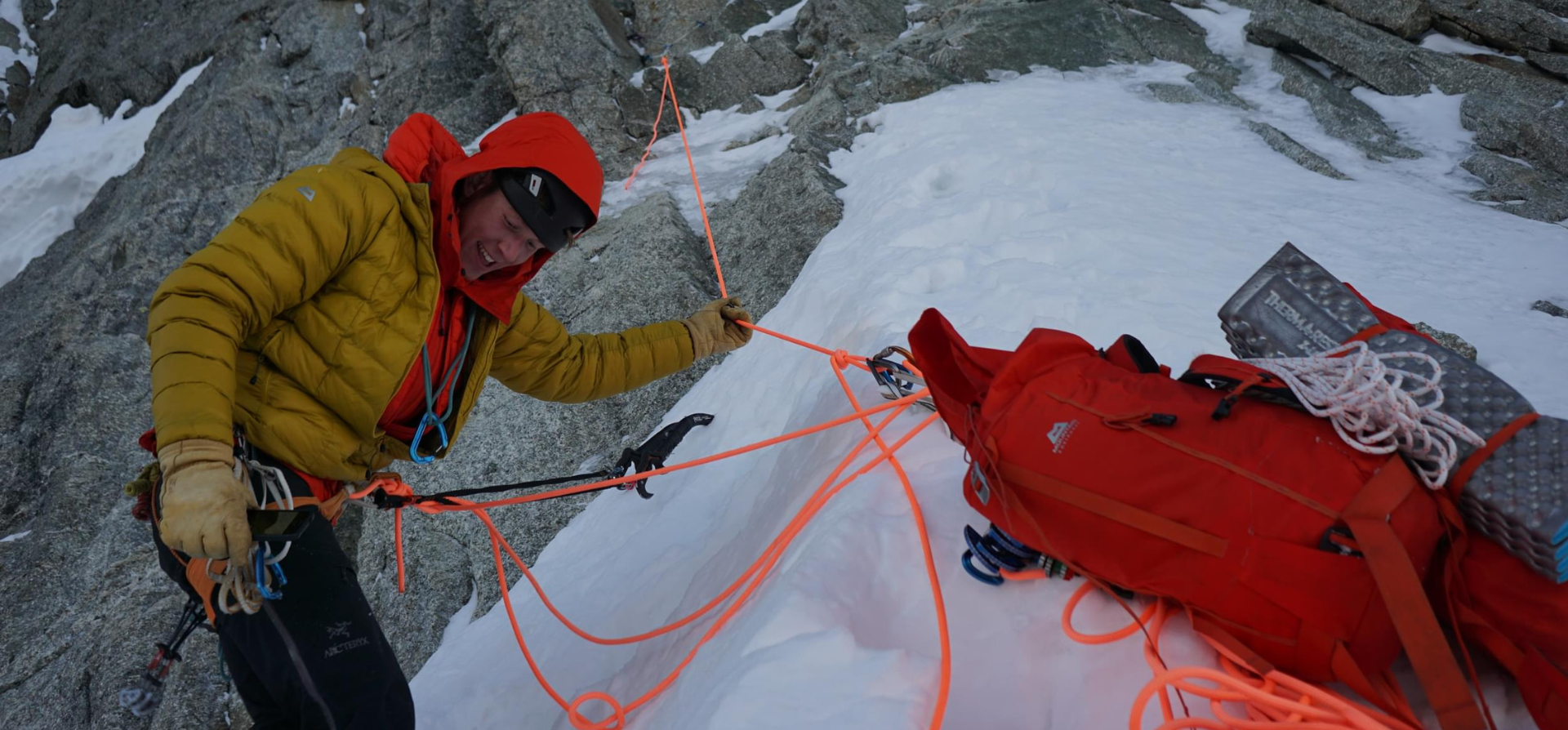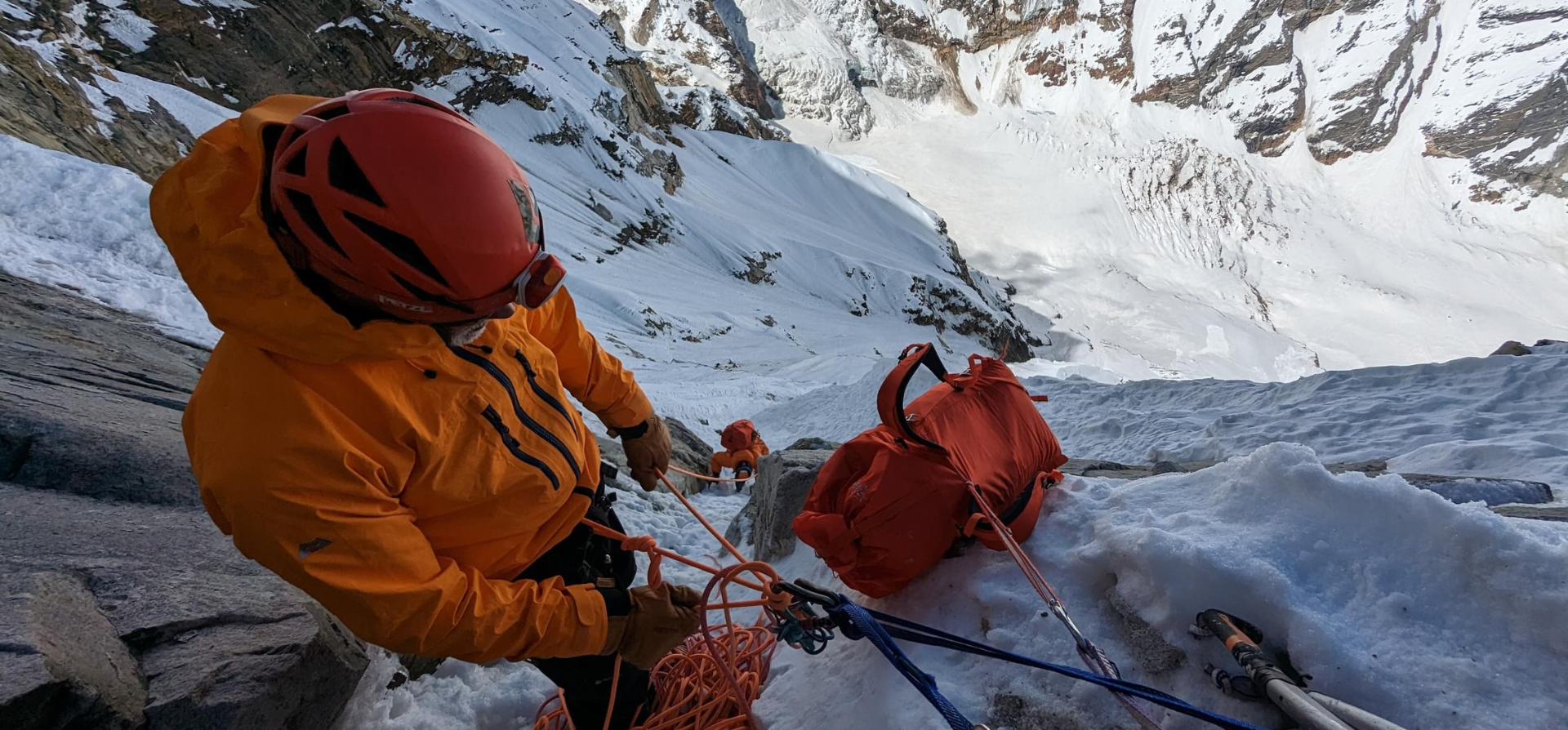General Care
Our packs are built to last but will last longer and perform better if cared for correctly. Packs should be periodically cleaned and any debris or grit shaken out. After use packs should be dried thoroughly and stored in a cool dry place away from direct sunlight. Zips should be kept clean and regularly lubed.

How to Wash Your Pack
Despite most people having probably never done it, it is a good idea to periodically wash your pack. A simple liquid detergent free from fabric softeners can be used or alternatively one of the many specialist cleaning products such as Grangers Performance Wash, Nikwax Tech Wash, Nikwax Tent & Gear Solarwash, Fibertec Pro Wash, or Storm Clothing Wash. If these aren’t available then soap flakes which can be purchased from a supermarket are also fine.
Ensure all pockets are empty and that the back panel if removable is put to one side. Any debris or grit should be removed from inside the pack, using a vacuum cleaner if necessary. Your pack should be washed by hand in warm, soapy water. Do not attempt to use a washing machine or place your pack in a tumble dryer. Using a cloth or soft-bristled scrubbing brush gently clean the outside of the pack, focussing on any heavily soiled areas such as the base. Rinse thoroughly before drying.
Once thoroughly dried, all components such as cordlocks should be checked and zips thoroughly lubed. We recommend using a product such as Gear Aid Zipper Lubricant, McNETT Zip Care or Zipper Stick. Alternatively natural products such as Beeswax can also be used.
Reproofing your pack
A Durable Water Repellent (DWR) treatment is applied to the outside of some packs to help water to bead and run-off. Others have waterproof coatings applied externally.
Either way, in use, you may notice the pack gradually begins to ‘wet-out’ when in contact with water or melting snow for any extended period of time. This occurs when water is no longer being repelled but instead is being absorbed into the fabric. It is usually most noticeable in high-wear areas such as the base and front panel. This is because the performance of any DWR or external waterproof coating is compromised by abrasion, dirt and oil contamination.
As such it may eventually be necessary to consider reproofing your pack. This is a process that should only be undertaken on a clean pack.
We recommend using a spray-on or applied reproofer such as Nikwax Tent & Gear SolarProof or Grangers Fabsil . Concentrate the spray on areas that are ‘wetting out’, following any relevant instructions.
Field Repairs
Unfortunately, even when well cared for, packs can be damaged. Razor sharp ski edges, ice axe picks and crampons can all puncture or cut even the most robust fabrics and hauling or simply continually dropping a heavy pack on rocks can all take their toll. Such damage is not covered by our warranty as this is deemed normal, if unfortunate, wear and tear. However, many of these faults can be repaired both ‘in the field’ and professionally.
-
Small Tears etc - Gaffa Tape / Duct Tape
Gaffa Tape or Duct tape applied over the immediate tear will work effectively for short-term fixes of pack tears. It is best applied to the inside of the pack but can also be applied to the outer fabric. Either way the fabric needs to be clean and dry. It’s unlikely to be a permanent solution.
-
Small to Medium Sized Tears etc - Tenacious Tape™ or Betrafol® Tape
Specialist repair tapes such as Tenacious Tape™ or Betrafol® Tape can be very effective at repairing small tears, but they do have a somewhat distinctive aesthetic. Please be aware however that such tapes, whilst extremely durable and often able to endure sustained use even at very low temperatures can leave residual marks which when taken off are near impossible to remove.
-
All Tears - Needle & Thread plus SeamGrip
If you have torn the body of the pack it is possible to repair such as damage using a heavy duty needle & thread. Ensure the area of the pack damaged is clean and dry and any loose threads have been removed. Use a zig-zag or similar stitch to close the tear or seam, before applying a small amount of flexible seam grip such as Gear Aid Seam Grip Plus or McNett SeamGrip.
-
Jammed or stiff Zip Pulls
Prevention is the best form of cure so regularly clean all zips using warm, soapy water. Do not force jammed zips. If washing and lubing a zip does not free a zip, carefully inspect the zip head for obvious signs of grit or dirt. If tooth or coil damage is visible then the zip puller has already had too much force exerted on it. Only a professional repair can solve this.
Professional Repairs
Should you require a professional repair, some of the common problems which occur through use can be rectified and will ensure your pack continues to provide many more years of service. This includes professionally bonding patch repairs to waterproof fabrics, repairing minor tears and damaged stitching as well as replacing or re-attaching drawcords etc. Contact us for further information.

End of Life
Many packs will typically last many years. Frequency of use, activity type and obviously the durability of the original product will all play a part in how long they can be expected to last for but given the lack of laundering, a pack's environmental impact is concentrated in its manufacture and end of life. As such please do everything you can to prolong it. Use it until it falls apart and do not replace it needlessly.
Here’s what you should do instead:
1) Revere it - Our products are made to be used. Learn to value the experience etched into the very fabric of your gear. Every nick, every mark is not just wear & tear but a story and a statement.
2) Revitalise it - Wash and maintain your pack (including reproofing) when required and store appropriately.
3) Repair it - Many minor faults that may seem terminal can actually be easily fixed. It may seem expensive but think about the cost not just of a new pack but the bigger environmental cost to your consumption.
4) Relegate it - Just because your pack can no longer cope with a major alpine climb that does not mean that it isn't ‘good enough’ for a wide range of less severe uses. So consider relegating your winter climbing jacket to the jacket you reach for when walking the dog, wearing around town or occasional rainy day walks.
5) Reappropriate it - Use the garment for something it was not originally designed for but works perfectly for. Keep an old waterproof jacket in your car in case of breakdowns or for fitting snow chains, use it for wet weather gardening or chopping logs.
6) Reassign it - Just because a jacket may not meet your needs any longer it may meet someone elses. Don’t use this as an excuse to not think about your own actions (!) - but there are numerous specialist charities who need outdoor clothing and many groups will gratefully receive donations of used gear, even if slightly damaged.
7) Reuse it - ave you ever thought of sitting on a GORE-TEX covered bar stool, or carried a DRILITE® tote bag. Basically anything that requires something waterproof or easily wiped clean and that is tough can be made from pieces of your waterproof clothing.
8) Recycle it - Recycling can save energy and resources that would otherwise be used in the manufacture of virgin materials but unfortunately for most waterproof jackets it’s practically impossible to do. Composite materials, bonded components, a mixture of different polymers all mean that waterproof clothing put to no other use is destined for landfill… that’s why we’d ask that you try to do everything you can to keep your waterproof clothing in use for longer.






